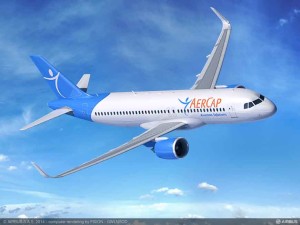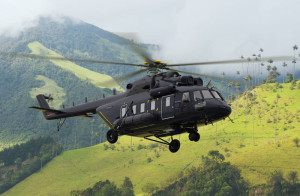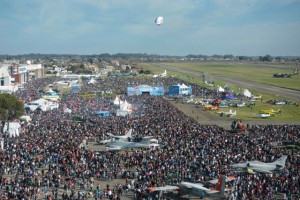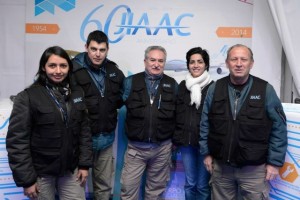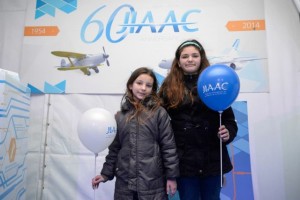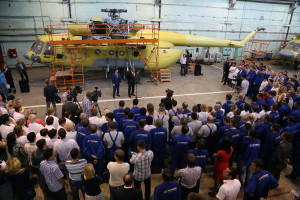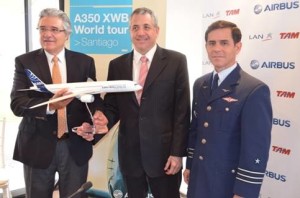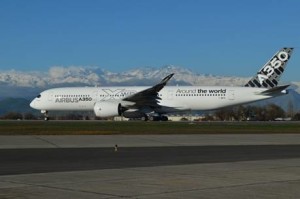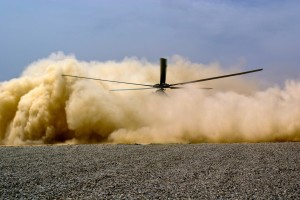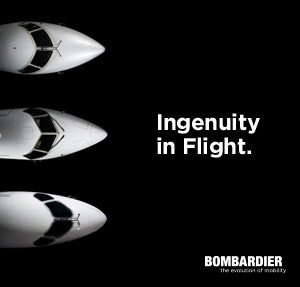Russian Helicopters to share experience of operating Ka-32A11BC and Мi-171А1 in Latin America
August 12, 2014
Moscow / 12 August 2014
Russian Helicopters, a subsidiary of Oboronprom, part of State Corporation Rostec, will showcase new and innovative models of helicopters at the Latin American exhibition and business aviation conference LABACE 2014 (Latin American Business Aviation Conference and Exhibition), to be held from 12-14 August in São Paulo, Brazil. Experts and representatives of regional operators will share their experience of operating Russian helicopters Mi-171A1 and Ka-32A11BC, which have already been used effectively in South America for a wide range of tasks.
The Mi-171A1 helicopter – one of the modifications of the popular Mi-8/17 series – received approval in the form of certification by the Brazil Aircraft Register in 2005. The Mi-171A1 won a tender from the Brazilian national oil company Petrobras, and is used as a transport helicopter in remote areas of the Amazon basin by Atlas Taxi Aereo. Until the end of this year, this Brazilian fleet operator gained another reliable and economical helicopter.
“Our company uses the multirole Mi-171A1 for work in support of the operations of Brazilian oil company Petrobras,” said CEO and co-owner of Atlas Taxi Aéreo, Waldomiro F. Da Silva Junior. “These helicopters are perfect for the climatic conditions in the Amazon region, as they are able to fly in 45-degree heat and almost 100 percent humidity.”
The legendary Mi-8/17 series is a clear favorite in the corporate and VIP transport market. Its spacious cabin offers unique possibilities for tailored fitting-out and finishing and provides the greatest possible comfort for passengers. In August 2013, Russian Helicopters received additional certification for the Mi-171, designed for corporate and VIP transportation. Additional equipment has been installed to maximise the level of comfort even for long flights.
The Ka-32A11BC multirole helicopter is a recognized leader in its class. The Brazilian company Helipark Taxi Aéreo has operated the Ka-32A11BC since 2012. The helicopter is used for the transport of industrial cargo on an external sling, but also has a number of additional capabilities. Ka-32A11BC’s coaxial rotors offer advantages in precision hovering and manoeuvrability that are needed when performing complex assembly operations, such as the construction of power lines in the Amazon basin. The Ka-32A11BC has proven itself as an effective firefighting helicopter. It is able to put out fire using a horizontal water cannon and Bambi-Buckets.
“The Ka-32A11BC helicopter has unique characteristics for its class, able to perform effectively all the tasks that we require,” said Helipark Taxi Aéreo President João Velloso. “Of particular note is the reliability of the helicopter; it has never failed us.”
Russian Helicopters will present exhibitors and visitors with new and promising models of helicopters from its product line. One of these is the multirole Mi-171A2. This helicopter combines the traditional advantages of the Mi-8/17 series with the latest technology, offering customers even more opportunities. Thanks to a whole variety of innovations, the helicopter’s flight capabilities have been significantly improved, including greater range, cruising speed and lift capacity, while noise levels have been significantly reduced. Modern complex avionics reduces pilots’ workload and makes flying more efficient.
Russian Helicopters annually reports steady growth in demand for its products in the South American market, which is one of the fastest growing in the world. At the beginning of 2014, Russian Helicopters’ fleet production exceeded 400 units. Today, Russian Helicopters is widely represented in the class of commercial helicopters, with a maximum take-off weight of 10 to 20 tonnes, taking up a 77% stake in the regional fleet in this segment. Russian helicopters are used for military purposes in a number of countries in Latin America, and make up the basis of army aviation fleets. Participation in the LABACE 2014 exhibition will allow Russian Helicopters to introduce the latest Russian helicopter sectors to regional partners in Latin America and the Caribbean, strengthening mutually beneficial cooperation and establishing new business contacts.
La JIAAC estuvo presente en la muestra “Argentina Vuela”
August 12, 2014
Más de un millón de personas participaron de la jornada de puertas abiertas en la Base Aérea de Morón, durante la celebración del aniversario de la Fuerza Aérea Argentina. La JIAAC realizó distintas acciones de difusión y presentación de su actual modelo de investigación
La Junta de Investigación de Accidentes de Aviación Civil (JIAAC) fue una de las protagonistas en las jornadas de puertas abiertas “Argentina Vuela”, que se realizaron el 9 y 10 de agosto en la Base Aérea Militar de Morón, en el marco de un nuevo aniversario de la creación de la Fuerza Aérea Argentina.
El organismo, dependiente de la Secretaria de Transporte del Ministerio del Interior y Transporte de la Nación contó con un espacio exclusivo de informaciones y esparcimiento, con diversas acciones de difusión, combinadas con el relax y el entretenimiento, especialmente para los chicos, en coincidencia con la celebración del “Día del Niño”, durante el domingo.
Las jornadas contaron con una masiva asistencia de público, conformado tanto por especialistas, pilotos, técnicos y fanáticos de la aviación, como aficionados y familias enteras que aprovecharon los días a pleno sol para pasear, ver de cerca las aeronaves y asombrarse con los múltiples shows de acrobacia aérea, paracaidismo y vuelos rasantes.
Según confirmaron los organizadores, entre sábado y domingo asistieron en total más de un millón de personas.
La presidenta de la JIAAC, Cdra. Pamela Suárez, asistió al acto de inauguración que se realizó el viernes 8 de agosto junto a la ceremonia por el 102º aniversario de la Fuerza Aérea Argentina. Desde allí aprovechó para remarcar la “importancia de hacer una jornada de puertas abiertas en forma conjunta entre la aviación civil y militar”. Como parte de los actos conmemorativos, en ese mismo día se dejó inaugurado el monumento al aviador Jorge Newbery y se realizó un desfile militar.
Como preludio, durante los días 6 y 7 de agosto se realizaron visitas programadas de contingentes de distintos establecimientos educativos e institucionales de todo el país. Además, el día viernes se entregaron premios estímulo a distintos proyectos de escuelas técnicas.
Además de los shows dinámicos que se ganaron todas las miradas, la muestra “Argentina Vuela” contó con la exhibición de aviones de combate, de transporte y civiles. Los visitantes también pudieron recorrer las instalaciones del Museo Nacional de Aeronáutica e interiorizarse sobre las actividades y competencias de los diversos organismos del Estado que participaron.
Con una clara orientación educativa y didáctica, en el marco de la política de apertura hacia la comunidad que coincide con los 60 años del organismo, el espacio de la JIAAC tuvo una excelente recepción e interacción con todos los asistentes que se acercaron a conocer más el trabajo realizado por la institución y a llevarse globos que el personal presente en el stand entregó como regalo a los más chicos.
Kazan Helicopters launches new painting and finishing workshop
August 11, 2014
Kazan / 11 August 2014
Russian Helicopters, a subsidiary of Oboronprom, part of State Corporation Rostec, announces that Kazan Helicopters has launched a new painting and finishing workshop as part of its ongoing programme of upgrade work. The new facility was opened today in the presence of the President of Tatarstan, Rustam Minnikhanov.
“The construction of the new workshop was driven by the plant’s increased production volumes,” said Vadim Ligai, General Director of Kazan Helicopters and Deputy CEO of Russian Helicopters. “Using new paint ovens will shorten the helicopter painting cycle by an average of 25-30%, increase application quality and improve working conditions.”
The new workshop consists of advanced equipment including seven paint ovens built by Russian company Novateck, a pre-painting processing chamber, and equipment to regulate temperature and humidity during adhesion operations. Before the reconstruction, helicopters were painted in non-segregated premises that also housed the paint ovens. There were also no separate workshops for finishing of components, including VIP cabins, and no isolated areas for pre-painting surface preparation or design of fuel tanks and other parts.
The cost of constructing and outfitting the new workshop was about RUB 467 million. The investment has increased the throughput capacity by 50%, while the painting cycle has reduced from nine to five hours. Another important benefit is that the new equipment will increase energy efficiency, reducing electricity costs by lowering consumption.
Upgrading production capacities is a key aim of Russian Helicopters’ ongoing drive to create a dynamic and globally competitive helicopter industry. Russian Helicopters launched this extensive programme in 2008, and has made significant investments: in 2013 investment in production capacities totalled RUB 8.3 billion, an increase of 8.5% on the previous year.
Work began in 2008 on upgrading and technical refitting at Kazan Helicopters and the rest of Russia’s helicopter industry. Today the plant has an investment programme through 2018 that includes around 15 individual investment projects. Since work began, the plant’s machining production facilities have been completely reconstructed: two automated production lines by Mazak have been installed for production of components, each of which requires a single operator per shift. The lines can work for 8 hours unsupervised, which means that they can operate around the clock. Labour productivity is 2-2.5 times higher than for traditional machining centres, and more than 20 times greater than using general-purpose equipment.
Upgrade work of the plant’s warehousing facilities and logistics is also nearing completion, while reconstruction of the assembly, galvanising and other production facilities is underway. In total the plant plans to spend RUB 12.245 billion on reconstruction and upgrade work.
Kazan Helicopters produces Mi-8/17 series helicopters that are operated in over 100 countries worldwide. A wide range of configurations are produced: transport, passenger, search and rescue, landing and transport, among many others. Preparations are underway to launch production of the Mi-38 passenger transport helicopter. Since 1997, Kazan Helicopters has been certified to develop helicopter technology: today the light twin-engine Ansat helicopter is in series production.
Russian Helicopters, JSC is a subsidiary of UIC Oboronprom, which in turn is a part of State Corporation Rostec. It is one of the global leaders in helicopter production and the only helicopter design and production powerhouse in Russia. Russian Helicopters is headquartered in Moscow. The company comprises five helicopter production facilities, two design bureaus, a spare parts production and repair facility, as well as an aftersale service branch responsible for maintenance and repair in Russia and all over the world. Its helicopters are popular among Russian ministries and state authorities (Ministry of Defence, Ministry of Internal Affairs, Emergency Control Ministry), operators (Gazpromavia, UTair), major Russian corporations. Over 8000 helicopters of Soviet/Russian make are operated in 110 countries worldwide. Traditionally the demand is highest in the Middle East, Africa, Asia-Pacific, Latin America, Russia, and CIS countries. Russian Helicopters was established in 2007. In 2013 its IFRS revenues increased 10% to RUB 138.3 billion. Deliveries reached 275 helicopters.
UIC Oboronprom, JSC is a multi-profile industrial and investment group established in 2002. It is a part of Russian Technologies State Corporation. Its main tasks include: helicopter engineering (Russian Helicopters, JSC) and engine-building (United Engine Industry Corporation managing company).
State Corporation Rostec is a Russian corporation founded in 2007 for the purpose of promoting the development, production and export of hi-tech civilian and military industry products. It comprises 663 organizations, nine of which have now been formed as holding companies of the military-industrial complex and five of them are involved in civil industries. Rostec’s organizations are located in 60 constituent entities of the Russian Federation and supply their products to the markets of more than 70 countries. The revenue of Rostec in 2013 amounted to RUB 1, 04 trillion, with net profit of RUB 40 billion. The tax deductions into the treasuries at all levels exceeded RUB 138 billion.
FIDAE recibió por primera vez en Chile al Airbus A350 XWB
August 7, 2014
La aeronave comercial es considerada la más moderna del mercado gracias a su eficiente consumo de combustible, menor emisión de ruido y CO2, además de contar en su composición con materiales de última tecnología y renovado diseño con cabina extra ancha.
Su presencia en nuestro país se enmarca dentro de sus viajes de certificación y fue recibido por la principal feria del continente, FIDAE, en sus instalaciones en el costado norte del aeropuerto internacional de Santiago.
La Feria Internacional del Aire y del Espacio, FIDAE, como la muestra aeroespacial, de defensa y seguridad más importante del continente, fue la encargada de recibir en sus dependencias al Airbus A350 XWB, considerado el avión comercial más moderno del mercado.
Este modelo es la última novedad del fabricante europeo y aterrizó en Santiago como parte del proceso de “Route Proving” requerido para su certificación que la aeronave comercial está realizando a nivel mundial.
Para el Director Ejecutivo de FIDAE, Comandante de Grupo (A) Fernando Silva de la Harpe, “recibir por primera vez en Chile y Sudamérica al Airbus 350 es motivo de orgullo, ya que ratifica la importancia que nuestra feria tiene a nivel mundial como una real y efectiva puerta de entrada al mercado de la región; además, es una clara muestra de las estrechas relaciones y la preocupación permanente que la Feria Internacional del Aire y del Espacio tiene hacia sus expositores”.
La aeronave llegó al Aeropuerto Internacional Arturo Merino Benítez proveniente de Nueva Zelandia y estuvo en suelo chileno cerca de 5 horas, donde el equipo de Airbus realizó diversas pruebas durante el trayecto y posterior aterrizaje. El A350 despegó cerca de las 17.00 hrs con rumbo a la ciudad de Sao Paulo para posteriormente volar a Toulouse donde comenzó el tramo de prueba.
En la ocasión, estuvieron presentes ejecutivos y autoridades de líneas aéreas, entidades locales del mundo aeronáutico y representantes de la Fuerza Aérea de Chile, quienes conocieron los detalles de fabricación y ventajas del A350 por parte de su fabricante.
Una de las principales características del A350 es su calidad de “eco-eficiente” gracias a su menor emisión de CO2 y ruido y poseer un fuselaje ancho “Extra Wide Body” (XWB), además de estar compuesto con cerca del 70% por materiales como el titanio, aluminio y fibra de carbono, lo que le permite una reducción de cerca del 25% de combustible respecto a su competencia en tramos de largo alcance.
La familia A350 XWB está compuesta por tres versiones para pasajeros con una real capacidad de largo recorrido sobre 8.500mn/15.580 kilómetros. En una configuración típica de dos clases, el A350-800 ofrecerá 276 asientos, mientras que el A350-900 y el A350-1000 ofrecerán 315 y 369 asientos respectivamente.
En la oportunidad, se aprovechó también de presentar la decimonovena edición de FIDAE que se realizará entre el 29 de marzo y 3 de abril de 2016, para la cual se está gestionando la presencia de la aeronave comercial más moderna a nivel mundial, el Airbus 350 XWB, además de las últimas novedades del mundo aeroespacial, defensa y seguridad en la principal plataforma comercial del continente.
FIDAE received for first time in Chile the Airbus A350 XWB
The commercial aircraft is considered the most modern in the market thanks to its efficient fuel consumption, lower noise and CO2 emission, as well its material composition with the latest technology and renewed design with extra wide cabin.
Its presence in our country is part of its certification flights and it was received in the foremost aerospace exhibition of the continent, FIDAE, in its facilities at the north side of the international airport of Santiago.
The International Air & Space Fair, FIDAE, as the foremost aerospace, defence and security exhibition of the continent, was in charge of hosting in its facilities the Airbus A350 XWB, considered the most modern commercial aircraft of the market.
This model is the latest innovation of the European manufacturer and it landed in Santiago as part of its Route Proving process required for its certification that the aircraft is performing at world’s level.
For the FIDAE CEO, Lt. Colonel Fernando Silva, “receive for first time in Chile and South America the Airbus 350 is a reason of pride, which ratifies the importance that our fair has at world’s level as a real and effective entrance gate to the regional market; besides, it is a clear demonstration of the close relations and the constant concern that the International Air & Space Fair has towards to its exhibitors”.
The aircraft arrived to the Arturo Merino Benitez Airport from New Zealand and it was in Chilean soil for about five hours, where the Airbus team performed several test during the route and after landing. The A350 took off about the 17.00 hrs. to Sao Paulo, for then to fly direct to Toulouse, place where it started the route proving.
During the activity, executives from airlines and authorities, local entities of the aeronautical world and representatives of the Chilean Air Force were part of the visitors who had the opportunity to know the details from its manufacturer the A350 manufacturing and advantages.
One of the main features of the A350 is its eco-efficient capacity thanks to a CO2 and noise lower emission, and its Extra Wide Body (XWB) fuselage that is composed almost 70% by materials like titanium, aluminum and carbon fiber, allowing a 25% fuel reduction in comparison to its competitors in long-range flights.
The A350 XWB family has three passengers version with a real capacity of long range over the 8,500mn/15,580 kilometers. In a typical configuration of two classes, the A350-800 will offer 276 seats, and the A350-900 and A350-1000 will provide 315 and 369 seats correspondingly.
In the occasion, it was also taken the opportunity to present the nineteenth edition of FIDAE that will take place between March 29 and April 3, 2016, for which it is having negotiations to count with the presence of the most modern commercial aircraft worldwide, the Airbus 350 XWB, along with the latest innovations of the aerospace, defence and security sector in the leading commercial platform of the continent.
A “Rosoboronexport” planeja criar “Cidades Seguras” na América Latina
July 28, 2014
Moscou, 25 julho, 2014
Comunicado de imprensa
A “Rosoboronexport”, sendo parte integrante da Corporação Estatal RosTec, está preparando as propostas aos países da América Latina de desenvolvimento de programas integrados de garantia da segurança dos Estados, grandes centros administrativos, cidades, fronteiras nacionais e instalações de particular importância.
A componente chave do conceito proposto aos parceiros latino-americanos é um Sistema intelectual multinível denominado “Cidade Segura”. Trata-se do Sistema integrado de monitoramento e controle de forças e meios em tempo real que aumenta substancialmente a eficiência da ação dos serviços operacionais em todas as etapas da sua atividade rotineira, desde a previsão e alerta de situações adversas até a localização e eliminação destas.
A “Rosoboronexport” igualmente propõe diferentes equipamentos especiais, armamento e meios técnicos para as forças de ordem pública e forças especiais, equipamentos de detecção e inspeção, entre outros, inclusive os necessários na realização de eventos de massa.
A Rússia possui grande experiência e dispõe de meios técnicos indispensáveis para a construção de “Cidade Segura”. Um brilhante exemplo da sua capacidade é a criação do sistema de garantia da segurança para as Olimpíadas de Inverno 2014 em Sóchi. Esta experiência pode ser aproveitada pelo Brasil no quadro de preparação para os Jogos Olímpicos de Verão 2016 no Rio de Janeiro.
A recente vista do Presidente da Rússia Vladimir Putin a uma série de países da Região, bem como as negociações no âmbito da cúpula do BRICS no Brasil demonstraram o interesse dos países em incrementar a Cooperação Técnico-Militar com a Rússia, especialmente nos domínios da cooperação técnico-científica e industrial.
Em particular, a Presidente do Brasil Dilma Rousseff, em entrevista coletiva após a reunião com Vladimir Putin, expressou sua esperança que “os nossos países vão consolidar as relações nos setores de energia, defesa, ciência e técnica, entre outros”.
Os projetos de envergadura da “Cidade Segura” realizados em cooperação com as companhias nacionais, além de oferecer maior eficiência no combate a ameaças terroristas, criminalidade e imigração ilegal, permitirão dar um novo impulso ao atual desenvolvimento dinâmico da cooperação econômica e técnico-militar entre a Rússia e os países da América Latina.
�
Boeing to Design XS-1 Experimental Spaceplane
July 20, 2014
DARPA program seeks to lower satellite launch costs
HUNTINGTON BEACH, Calif., July 15, 2014 – Boeing [NYSE: BA] plans to design a reusable launch vehicle for the Defense Advanced Research Projects Agency (DARPA) in support of the U.S. government’s efforts to reduce satellite launch costs. DARPA’s XS-1 Experimental Spaceplane is conceived as a reusable, unmanned booster with costs, operation and reliability similar to modern aircraft.
“Developing a vehicle that launches small payloads more affordably is a priority for future U.S. Defense Department operations,” said Steve Johnston, director of Boeing’s Phantom Works Advanced Space Exploration division. “Boeing brings a combination of proven experience in developing launch systems and reusable space vehicles, along with unparalleled expertise in the development and fielding of highly operable and cost-effective transportation systems.”
Under the $4 million preliminary design contract, Boeing plans to work on a reusable first stage launch vehicle capable of carrying and deploying an upper stage to launch small satellite payloads of 3,000 to 5,000 pounds (1,361 kg to 2,268 kg) into low-Earth orbit.
“Our design would allow the autonomous booster to carry the second stage and payload to high altitude and deploy them into space. The booster would then return to Earth, where it could be quickly prepared for the next flight by applying operation and maintenance principles similar to modern aircraft.” said Will Hampton, Boeing XS-1 program manager. “Drawing on our other innovative technologies, Boeing intends to provide a concept that uses efficient, streamlined ground infrastructure and improves the turnaround time to relaunch this spacecraft for subsequent missions.”
DARPA plans to hold a Phase II competition next year for the follow-on production order to build the vehicle and conduct demonstration flights.
A unit of The Boeing Company, Boeing Defense, Space & Security is one of the world’s largest defense, space and security businesses specializing in innovative and capabilities-driven customer solutions, and the world’s largest and most versatile manufacturer of military aircraft. Headquartered in St. Louis, Boeing Defense, Space & Security is a $33 billion business with 56,000 employees worldwide. Follow us on Twitter: @BoeingDefense.
Airbus A330 MRTT tanker aircraft refuels Airbus A400M
July 20, 2014
First “wet contacts” conducted in latest trials
Airbus Defence and Space has performed the first air-to-air refuelling of the Airbus A400M new generation airlifter from the A330 MRTT Multi Role Transport Tanker. In the course of four flights, by day and night, in southern Spain, the A400M received more than 80 tons of fuel in 100 “wet contacts” from a Royal Air Force Voyager version of the A330 MRTT using the tanker´s Fuselage Refuelling Unit. The trials follow dry contacts conducted in an earlier test-phase and support the A400M´s capability to conduct extremely long-range non-stop deployments. The photo shows the two aircraft framed by the wing of an F-18 chase aircraft.
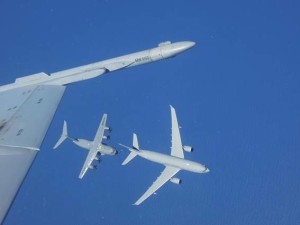
ICBC, da China, assina acordo de compra para até 20 E190-E2
July 17, 2014
Brasília – Distrito Federal, 17 de julho de 2014 – Em cerimônia de assinatura que contou com a presença dos presidentes das duas nações, durante a visita de Estado do Presidente chinês, Xi Jinping, ao Brasil, a Embraer firmou um acordo de venda para até 20 E190-E2 com a ICBC Financial Leasing Co., Ltd. (ICBC Leasing), da China, sendo 10 pedidos firmes e 10 direitos de compra. Os pedidos firmes para as 10 primeiras aeronaves serão incluídos no backlog da Embraer no 3º trimestre de 2014.
O E190-E2 será o primeiro modelo da família de E-Jets E2 a entrar em serviço. O valor do contrato é de USD 1,1 bilhão a preço de lista, caso todos os direitos de compra sejam convertidos em pedidos firmes. As primeiras entregas estão previstas para o início de 2018.
“Ter a ICBC Leasing como arrendador do E2 dá aos nossos potenciais clientes mais uma opção quando pensam em operar estas aeronaves de última geração”, disse Paulo Cesar Silva, Presidente & CEO da Embraer Aviação Comercial. “A ICBC Leasing tem se expandido rapidamente nos últimos anos para se tornar uma das principais empresas de leasing de aeronaves do mundo. O forte apelo dos E-Jets junto às companhias aéreas de todo o mundo foi um fator decisivo para a aquisição dos E2 pela ICBC”.
Estabelecida em 2007 como uma subsidiária integral do Industrial and Commercial Bank of China, um dos maiores bancos do mundo, a ICBC Leasing é proprietária e gerencia uma frota de aproximadamente 380 aeronaves. Em junho de 2012, a ICBC Leasing adquiriu 10 jatos executivos Legacy 650, sendo cinco opções, seguindo um Memorando de Entendimento assinado em abril daquele ano.
“Estamos satisfeitos em fazer parte do programa E-Jets E2 e ampliar ainda mais nossa parceria com a Embraer”, disse Cong Lin, CEO da ICBC Leasing. “Adicionar os E-Jets E2 ao nosso portfólio vai diversificar nossos recursos, fortalecer a nossa liderança no mercado de leasing e nos apoiar na expansão do mercado de leasing de aviação regional. Estamos confiantes que esses novos jatos trarão grandes benefícios para os nossos clientes.”
O programa E-Jets E2 reforça o comprometimento da Embraer em investir continuamente na linha de jatos comerciais da Empresa e manter sua estabelecida liderança de mercado no segmento de 70 a 130 assentos. Motores de última geração, em conjunto com novas asas aerodinamicamente avançadas, controles de voo totalmente fly-by-wire e avanços em outros sistemas resultarão em melhorias significativas no consumo de combustível, custos de manutenção, emissões e ruído externo.
Israel Aerospace Industries Reveals its New Helicopter Safety Technology
July 16, 2014
Israel Aerospace Industries (IAI) reveals its innovative Helicopter safety technology, which enables helicopter flight in Degraded Visual Environments (DVE), under all weather conditions.
Today’s helicopter military and paramilitary operational missions typically involve flight over environments with a variety of ground obstacles. Such missions are often hampered by a combination of low-altitude obstacles and poor visibility, which may result in accidents and causalities. IAI’s technology was developed to provide a safe and affordable solution to such operational requirements.
The system features innovative staring radar, advanced processing algorithms and cockpit multi-functional display integration. The technology allows for low-altitude flight under all weather conditions or lighting and visibility, and for safe landing in brown-out conditions by alerting the pilot of electrical power lines and other ground obstacles.
The system generates a synthetic image of the terrain, highlighting flight obstacles such as power lines and their supporting poles or towers. The system achieves a very high probability of 95% for detection of power lines, comprises two compact 30 x 40 cm antennas, requires only 250 W of power, and weighs 30 kg. The system has successfully undergone flight tests and is available for performing real-time demonstration flights.
Yosef Melamed, General Manager of IAI’s LAHAV Division said: “IAI’s new helicopter safety technology is life-saving. It presents a unique business opportunity with potential markets worldwide. We are examining the possibilities for further development and marketing of the product, including cooperation with strategic partners.”
�
In the picture: Helicopter during landing in Degraded Visual Environment
AerCap firms up order for 50 A320neo Family aircraft
July 15, 2014
Strong appeal of fuel-efficient A320neo continues to attract lessors worldwide
AerCap, the industry leading lessor headquartered in Amsterdam, the Netherlands, has firmed up an order for 50 additional A320neo Family aircraft at the Farnborough International Airshow 2014. The contract, AerCap’s first major aircraft order following the acquisition of ILFC earlier this year, was signed by Philip Scruggs, AerCap’s President & Chief Commercial Officer and Fabrice Brégier, Airbus President and CEO. AerCap will announce its engine selection in due course.
Including today’s order for 50 A320neo aircraft, AerCap’s total order of A320neo aircraft rises to 200 and its total orders of Airbus aircraft rises to 945. Following the lessor’s acquisition of ILFC, AerCap becomes Airbus’ largest customer overall, both in number and value of aircraft purchased.
AerCap’s CEO Aengus Kelly said: “The A320neo family is proving to be enormously successful. AerCap has already placed 48 A320neo aircraft under lease agreement or letter of intent, so our decision to firm up for 50 additional A320neo Family aircraft is a natural extension of our fleet strategy.”
“We are honoured that AerCap has selected our popular A320neo for its first major aircraft investment since the acquisition of ILFC earlier this year,” said Fabrice Brégier, Airbus President & CEO. “It’s always great news when our valued customers come back for more of our aircraft and is clear confirmation that our products are satisfying operators’ needs thanks to the A320neo’s best-in-class cabin comfort, unbeatable economics and excellent operational reliability.”
The A320 Family is the world’s best-selling single aisle product line with more than 10,500 orders to date and over 6,100 aircraft delivered. Thanks to its wide cabin, all members of the A320 Family offer the industry’s best level of comfort in all classes and Airbus’ 18” wide seats in economy as standard. The newest member of the A320 Family, the A320neo, incorporates new generation engines and Sharklets (wing tip devices) which together deliver 15 percent in fuel savings. At the end of June 2014, firm orders for the NEO reached over 2,800 aircraft from 55 customers, representing a 60 per cent market share in its category.
